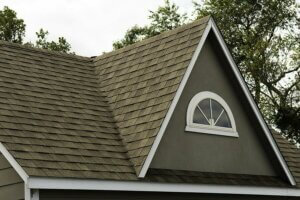In any architectural design, the roof serves as a primary defense line against the elements, particularly precipitation like rain and snow. One of the most critical aspects of a roof’s design is its valleys – a component that not only contributes to the overall aesthetic but also plays a vital role in a roof’s functionality.
Roof valleys are the V-shaped channels found on the point where two sloping roof sections intersect. In simpler terms, they’re the ‘troughs’ or ‘gutters’ that you see where different parts of the roof meet. They can occur in various types of roofing configurations, but they are most common in roofs that are not simple rectangles or squares, including L-shaped or complex, multi-gabled roofs.
The primary purpose of a roof valley is to channel water, directing rainwater and melting snow safely off the roof and into the gutter system.
Given their shape and positioning, valleys often bear the brunt of water runoff during heavy rain or snowfall. They are therefore designed to handle a larger volume of water than other areas of the roof.

There are three main types of roof valleys: open, closed, and woven.
Open Valleys: These are characterized by a visible channel running along the valley’s length, usually protected by a strip of metal. Open valleys tend to be more durable and offer efficient water drainage, making them suitable for areas with heavy rain or snowfall.
Closed Valleys: In closed valley configurations, shingles are laid across the valley, entirely covering it. Although aesthetically pleasing, closed valleys may not handle water runoff as efficiently as open valleys.
Woven Valleys: These are a type of closed valley where the shingles from both sides of the roof overlap along the valley line. Woven valleys are often used with three-tab shingles and are less common with architectural or laminate shingles due to their thickness.
Due to the large volumes of water that roof valleys manage, they are susceptible to wear and tear and potential damage. It’s not uncommon for debris like leaves, twigs, or even snow and ice to accumulate in the valleys, leading to blockages. These blockages can prevent water from draining properly, causing it to seep under the shingles and potentially lead to leaks, mold, and structural damage over time.
Regular roof maintenance should therefore include a thorough inspection and cleaning of roof valleys. Any signs of wear or damage, such as rusted metal, cracked or missing shingles, or granule loss, should be addressed promptly to prevent minor issues from becoming major problems.
In other words, roof valleys are a crucial part of your roofing system. They play a vital role in protecting your home from water damage and contribute to the roof’s aesthetic appeal.
Proper understanding and regular maintenance of roof valleys can significantly extend the life of your roof and ensure it continues to protect your building efficiently.
If you have further questions about roof valleys, contact your local roofing contractor at Allegiant Exteriors to keep your best interests in mind.
We offer no-obligation free roof valley inspections for both residential and commercial properties.
Read our reviews to learn more about us.